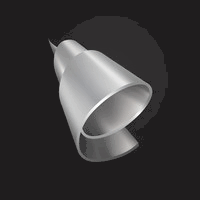Description

ESPRIT

CADISON
Comprehensive Overview: ESPRIT vs CADISON
ESPRIT and CADISON are both software solutions that serve different segments of the engineering and manufacturing industries, each providing specialized functions. Here's a comprehensive overview of each:
ESPRIT
a) Primary Functions and Target Markets:
- Primary Functions: ESPRIT is a high-performance Computer-Aided Manufacturing (CAM) software primarily used for CNC (Computer Numerical Control) programming. It supports a wide range of manufacturing processes, including milling, turning, wire EDM (Electrical Discharge Machining), multi-tasking machine operations, and additive manufacturing.
- Target Markets: ESPRIT targets industries such as aerospace, automotive, medical devices, industrial machinery, and tool and die. Its advanced functionality is designed to cater to the needs of machine shops, manufacturers, and companies that require precision CNC machining.
b) Market Share and User Base:
- ESPRIT is considered one of the leading CAM solutions globally. While specific market share figures can vary and are often undisclosed, its adoption is strong among users who require robust CNC programming capabilities. Its user base includes both small job shops and large manufacturing enterprises.
c) Key Differentiating Factors:
- Universal Compatibility: ESPRIT is known for its ability to work with a wide range of machine tools and control systems, providing versatility across different equipment.
- Advanced Simulation and Optimization: The software offers robust simulation tools that help users optimize their CNC operations, improving efficiency and reducing material waste.
- Precision and Complexity Handling: It excels in handling complex geometries and precision machining, making it ideal for industries requiring high accuracy.
CADISON
a) Primary Functions and Target Markets:
- Primary Functions: CADISON is an integrated engineering solution that combines CAD (Computer-Aided Design), P&ID (Piping and Instrumentation Diagram), and project management capabilities. It is used for designing, documenting, and managing complex plants.
- Target Markets: CADISON primarily targets industries such as utilities, process manufacturing, chemical, oil and gas, and water treatment plants that require detailed plant engineering and project management solutions.
b) Market Share and User Base:
- CADISON is a niche player in the plant design and engineering market. It's valued particularly in sectors where integrated engineering solutions that streamline workflow and project management are essential. Its market share is significant in regions and sectors that emphasize integrated plant design solutions but is less widespread than large, general-purpose design tools.
c) Key Differentiating Factors:
- Integrated Engineering Solutions: CADISON offers a unique blend of design, documentation, and management functionalities in a single platform, enhancing collaboration among different departments.
- Efficiency in Plant Design: It provides specialized tools for plant-specific engineering, enabling users to manage complex projects efficiently.
- Data Consistency and Collaboration: The software maintains single-source data management, ensuring consistency across the project lifecycle and fostering collaboration across disciplines.
Comparison and Conclusion
While ESPRIT and CADISON are both valuable tools in their respective fields, they cater to different requirements and market segments. ESPRIT is a CAM-focused solution excelling in machine shop environments, whereas CADISON offers comprehensive plant design and management capabilities in process industries. Their market share and user base depend heavily on the specific industry needs they address, with ESPRIT being more universally applicable in machining, and CADISON being more specialized and integrated for plant engineering. Key differentiators stem from their focus areas: ESPRIT's strength in CNC optimization and CADISON's holistic approach to plant lifecycle management.
Contact Info

Year founded :
2004
Not Available
Not Available
India
Not Available

Year founded :
Not Available
+49 61 96934900
Not Available
Germany
http://www.linkedin.com/company/cadison3d
Feature Similarity Breakdown: ESPRIT, CADISON
ESPRIT and CADISON are both software tools used in the engineering and manufacturing industries, but they cater to different aspects of the industry. As a result, their core features, user interfaces, and unique characteristics differ significantly. Here’s a detailed breakdown:
a) Core Features in Common
Both ESPRIT and CADISON offer features that cater to the needs of their respective users in the engineering workflow:
-
3D Modeling: Both platforms possess capabilities for creating and manipulating 3D models. While CADISON focuses more on plant design models, ESPRIT specializes in 3D models for CNC machining.
-
Integration and Interoperability: Both software solutions offer integration with other tools and systems due to the necessity of interacting with various design and manufacturing software in engineering workflows.
-
Project Management Features: Each has components for managing projects, though the specifics (e.g., ESPRIT for CNC project management and CADISON for engineering projects) differ based on their industrial applications.
b) User Interfaces Comparison
-
ESPRIT:
- Typically designed with machinists and CAM programmers in mind, prioritizing ease of use for CNC programming.
- Often features a more streamlined interface focused on rapid access to machining settings, simulation, and code generation.
- Emphasizes interactive graphical displays of toolpaths, machine environments, and stock models.
-
CADISON:
- Aimed towards architects, engineers, and plant designers, therefore it supports a more complex design and data management interface.
- Interfaces often feature comprehensive toolsets for handling different engineering documents and extensive databases.
- Typically combines 2D and 3D views with extensive data tagging and process modeling options.
c) Unique Features
-
ESPRIT:
- Advanced CNC Machining Capabilities: Features complex multi-axis machining capabilities and is highly specialized for diverse CNC operations including turning, milling, and EDM processes.
- Simulation Tools: Offers sophisticated simulation and verification tools to ensure the accuracy of machining processes before actual execution.
-
CADISON:
- Comprehensive Plant Design: Provides comprehensive tools tailored for plant engineering, covering disciplines such as piping, instrumentation, and electrical design.
- Data-Centric Approach: Strong emphasis on data integration with modules for managing piping and instrumentation diagrams (P&IDs) and isometric drawings.
- Collaborative Capabilities: Supports multi-user environments extensively to facilitate simultaneous work by multiple engineers on a single project.
In summary, while both ESPRIT and CADISON share some foundational elements linked to design and project management, they strongly diverge based on their industry focuses—ESPRIT in CNC machining and CADISON in plant design. Their user interfaces and specialized features reflect the specific needs of their target users, making them distinct tools in their respective fields.
Features

Not Available

Not Available
Best Fit Use Cases: ESPRIT, CADISON
ESPRIT and CADISON are specialized software solutions that cater to different aspects of engineering and manufacturing, and each is suited to particular types of businesses, projects, and industries. Here's how they fit different use cases and scenarios:
ESPRIT
a) Best Fit Use Cases for ESPRIT:
- Types of Businesses or Projects:
- Manufacturing Industry: ESPRIT is a powerful CAM (Computer-Aided Manufacturing) software known for its capabilities in CNC programming, making it the best choice for businesses involved in precision manufacturing.
- Aerospace and Automotive: Companies in these sectors benefit from ESPRIT's advanced functionalities for 5-axis machining, precise shaping of complex components, and streamlined machining operations.
- Metalworking Shops: Job shops and tool manufacturers that require high levels of customization and precision find ESPRIT advantageous for operations like milling, turning, and wire EDM.
- Medical Device Manufacturing: Firms involved in producing intricate and small-scale components, such as medical implants, utilize ESPRIT for its precise and reliable toolpath generation.
CADISON
b) Preferred Scenarios for CADISON:
- Types of Projects or Industries:
- Plant Engineering and Design: CADISON integrates engineering data with 3D design, making it ideal for businesses focusing on plant and process engineering.
- Process Industries: Companies in sectors like chemical, pharmaceutical, and water treatment find CADISON especially beneficial for managing complex plant projects.
- Infrastructure Projects: It is suited for EPC (Engineering, Procurement, and Construction) firms that need integrated solutions for design, planning, and execution of infrastructure projects.
- Utilities and Energy: CADISON's capabilities in handling large-scale projects make it preferred in the utilities sector, especially for power plants and distribution networks.
Industry Verticals and Company Sizes
d) Catering to Industry Verticals and Company Sizes:
-
ESPRIT:
- Industry Verticals: Primarily targets aerospace, automotive, industrial machinery, medical devices, and contract manufacturing sectors.
- Company Sizes: It is scalable and can serve small contract shops to large manufacturing companies requiring extensive CNC programming capabilities.
- Features: Offers a comprehensive suite of machining options compatible with a wide range of CNC machines, providing value across diverse machining needs.
-
CADISON:
- Industry Verticals: Geared towards plant and process engineering industries, particularly effective in chemical, pharmaceutical, and utility engineering sectors.
- Company Sizes: Suitable for medium to large-scale enterprises that require integrated project management, engineering, and design capabilities.
- Features: Provides an all-in-one solution combining design, engineering, and data management, thereby streamlining collaboration and efficiency on large projects.
Both ESPRIT and CADISON serve distinct needs within the engineering and manufacturing landscapes, with ESPRIT focusing on precision manufacturing and CNC programming, and CADISON focusing on plant engineering and integrated project management. Companies select between them based on specific industry demands and project scopes.
Pricing

Pricing Not Available

Pricing Not Available
Metrics History
Metrics History
Comparing undefined across companies
Conclusion & Final Verdict: ESPRIT vs CADISON
When comparing ESPRIT and CADISON, it is important to weigh their respective strengths and weaknesses to determine which product offers the best overall value. Here’s a detailed analysis to help reach a conclusion:
a) Overall Value
ESPRIT:
ESPRIT is renowned for its robust CAM (Computer-Aided Manufacturing) capabilities, offering extensive functionalities for complex CNC (Computer Numerical Control) programming, including turning, milling, and wire EDM. It is particularly valued in industries that require high precision and advanced toolpath strategies.
CADISON:
CADISON is a well-rounded solution for engineering that integrates CAD (Computer-Aided Design) with EPC (Engineering, Procurement, and Construction) processes. It is popular in the plant design sector, offering tools for process industries with a focus on data consistency and project lifecycle management.
Best Overall Value:
The best overall value depends heavily on the user's industry and specific needs. For manufacturing environments where precision machining and complex tool path generation are critical, ESPRIT holds an edge. Conversely, CADISON is more valuable in plant design and process engineering environments.
b) Pros and Cons
ESPRIT:
-
Pros:
- Advanced CNC programming capabilities.
- Strong support for multi-axis machining.
- Wide range of post-processing support for various machine tools.
- Regular updates and improvements with a focus on new machining strategies.
-
Cons:
- Requires technical proficiency for effective use.
- Licensing costs can be high, especially for small shops or independent users.
- Might offer more features than necessary for businesses focused solely on basic machining operations.
CADISON:
-
Pros:
- Integrated CAD and EPC processes streamline project workflow.
- Excellent for collaborative work, enhancing design efficiency.
- Strong database integration ensures data consistency throughout the project lifecycle.
- Adaptable to specific industry needs, particularly in process engineering.
-
Cons:
- May have a steep learning curve for users new to integrated systems.
- Initial setup and customization might require significant time investment.
- Primarily suited to plant design, which might limit its utility in other engineering disciplines.
c) Recommendations
-
Industry Alignment:
- Choose ESPRIT if your primary focus is on advanced CNC machining and requiring comprehensive toolpath strategies.
- Opt for CADISON if your work is centered around plant design, including process instrumentation and general engineering for large-scale projects.
-
Skill Level and Training:
- Consider existing teams' proficiency levels; ESPRIT might demand more up-front investment in training for operators unfamiliar with CNC processes.
- CADISON may require cross-functional training to fully leverage its integrated EPC features.
-
Budget:
- Evaluate budget constraints considering both licensing and potential hidden operational costs. ESPRIT might introduce higher costs in terms of software and necessary training, whereas CADISON’s initial setup and integration costs could be considerable.
In conclusion, the decision between ESPRIT and CADISON should be guided by the specific technical and business needs of the organization, particularly regarding industry focus and budget allowances. Both offer unique benefits that cater to distinct sectors, and users must prioritize these when deciding on the right tool for their application.
Add to compare
Add similar companies



